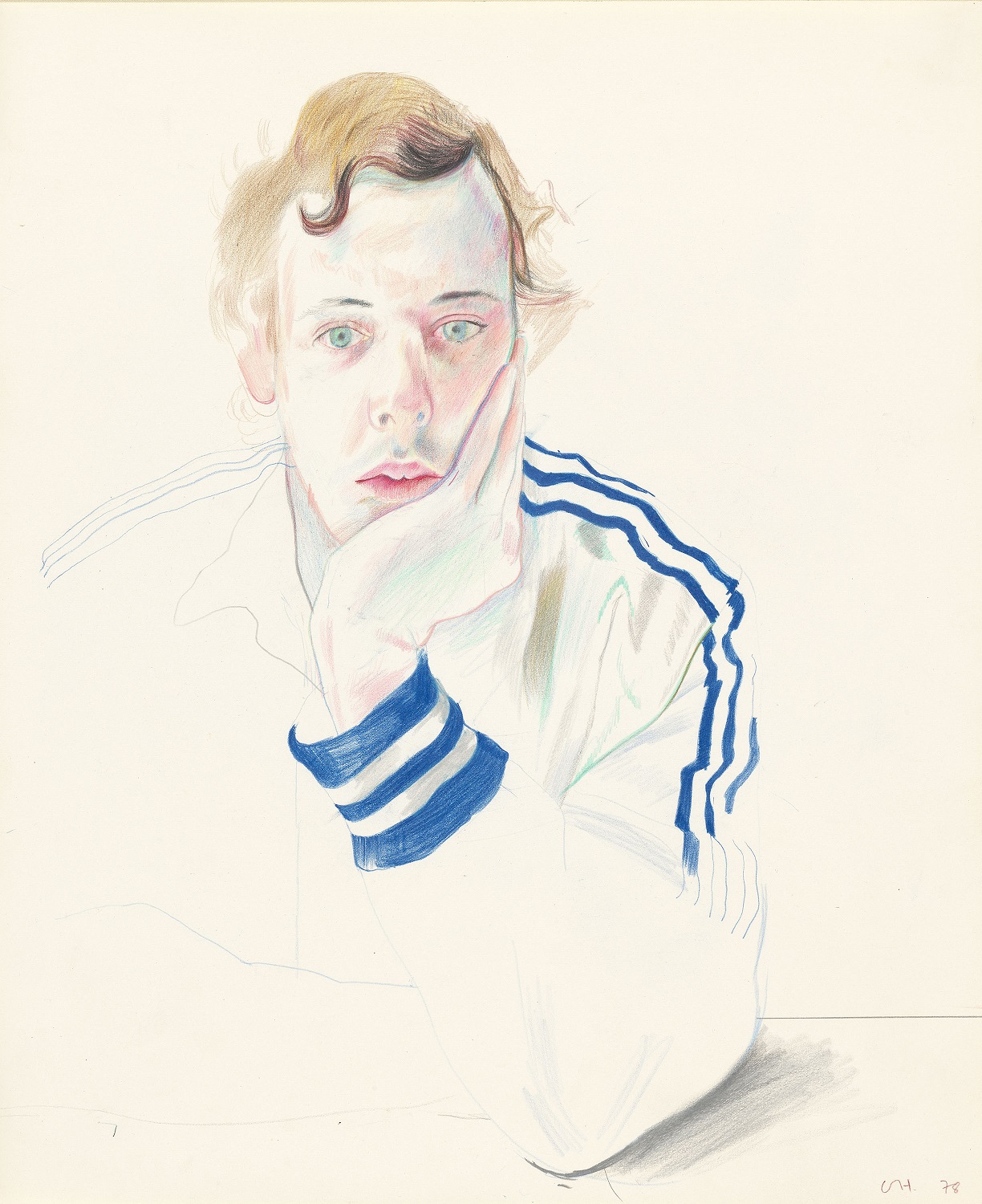This conversational quality brings vitality and spirit to drawings of Hockney’s late mother, the textile designer Celia Birtwell, the printmaker Maurice Payne; Hockney’s erstwhile lover, now curator and advisor Gregory Evans, and himself. Drawings made in changing styles and materials reflect Hockney’s development as an artist as much as his sitters’ shifting moods and aging bodies.
 Certain things don’t change, and Hockney is immediately recognisable in self-portraits made while he was still a teenager, drawn head on and with his characteristic steady gaze. It’s there again in a series of self –portraits made in charcoal some 30 years later. These daily observations made over a period of two months disclose shifts in mood and temper with disarming intimacy, as cheery exuberance turns contemplative, then glum. It’s not just nuances of posture and facial expression that produce such variety, and in these drawings Hockney explores the possibilities of charcoal as much as the expressive range of his own face.
Certain things don’t change, and Hockney is immediately recognisable in self-portraits made while he was still a teenager, drawn head on and with his characteristic steady gaze. It’s there again in a series of self –portraits made in charcoal some 30 years later. These daily observations made over a period of two months disclose shifts in mood and temper with disarming intimacy, as cheery exuberance turns contemplative, then glum. It’s not just nuances of posture and facial expression that produce such variety, and in these drawings Hockney explores the possibilities of charcoal as much as the expressive range of his own face.
His open and pragmatic attitude to techniques and materials started early, and Hockney’s art school etchings were motivated as much by free materials as by artistic considerations, while a laser photocopier provided him with the means to work quickly and autonomously on “homemade prints”. The iPad has provided an entirely new medium, and a further series of daily digital portraits, made in 2012, show him matching the versatility of this new tool with the expressive possibilities of his own face. Even at his most up-to-date, Hockney is never far from the old masters, and these playfully gurning self portraits nod to Rembrandt just as pairs of shoes can’t help but recall Van Gogh.
Nowhere is Rembrandt more powerfully invoked than in the relentless nature of time expressed most disconcertingly in Hockney’s portraits of Gregory Evans. A beautiful, Renaissance boy in early portraits from the 1970s, by 2019 age has done its work, and Gregory appears bored and resentful. Both artist and sitter are painfully honest with one another – there is no flattery here, from either of them, only a shared sense of inevitability.
- David Hockney: Drawing from Life at the National Portrait Gallery until 28 June
- More visual arts reviews on theartsdesk










![SEX MONEY RACE RELIGION [2016] by Gilbert and George. Installation shot of Gilbert & George 21ST CENTURY PICTURES Hayward Gallery](/sites/default/files/styles/thumbnail_125_x_125_/public/mastimages/Gilbert%20%26%20George_%2021ST%20CENTURY%20PICTURES.%20SEX%20MONEY%20RACE%20RELIGION%20%5B2016%5D.%20Photo_%20Mark%20Blower.%20Courtesy%20of%20the%20Gilbert%20%26%20George%20and%20the%20Hayward%20Gallery._0.jpg?itok=3oW-Y84i)




Add comment